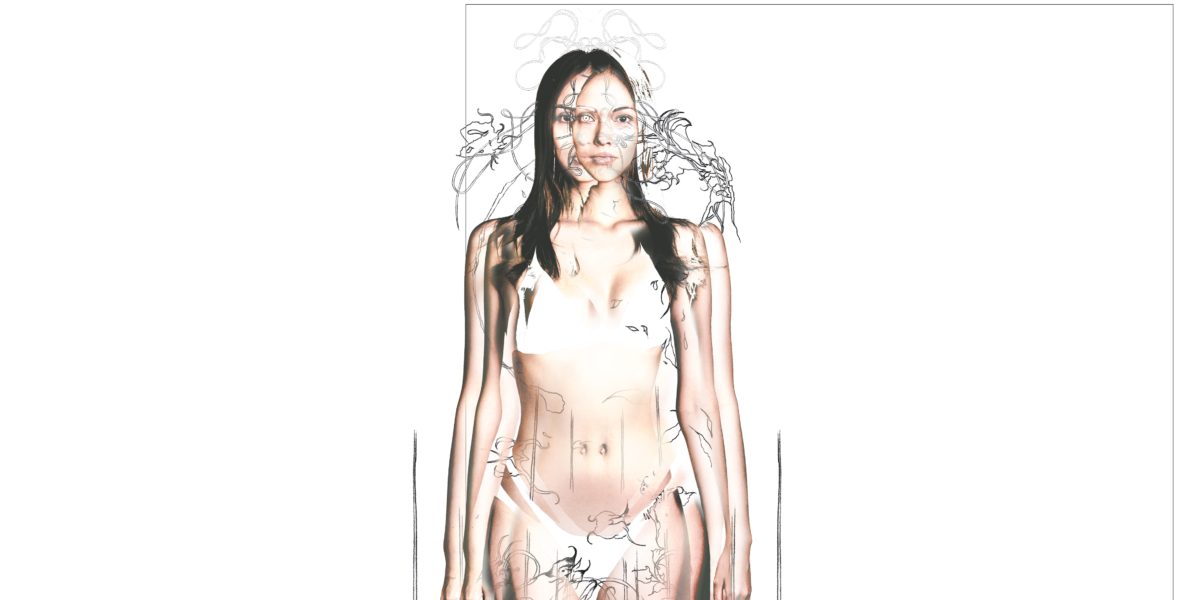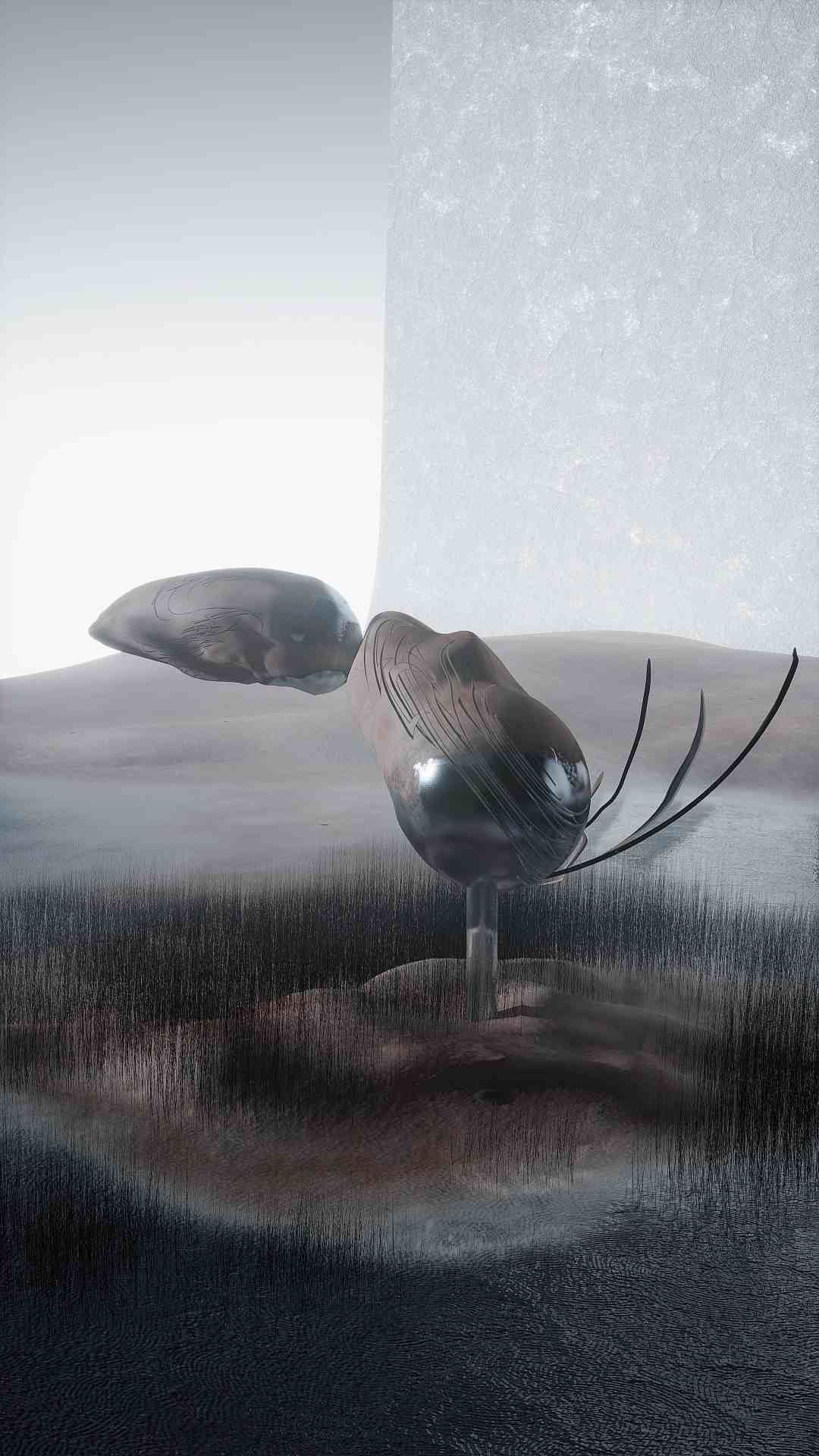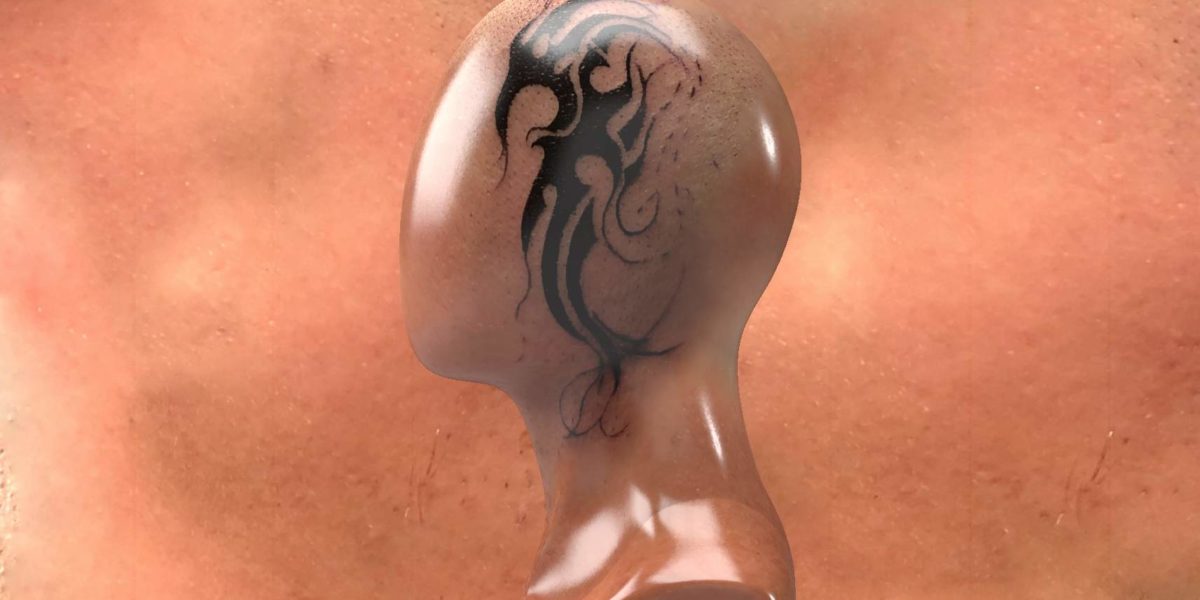Post-Tribal
Visiting time: ●●● Average (20 minutes)The most popular tattoo in the nineties was the tribal tattoo. The solid shapes, placed in large sections and thick lines, decorated many upper arms, backs and lower legs. The unsubtle tattoos were inspired by the traditions of the Maori, Hawaiians and Aztecs, among others, but had little to do with them in practice. We now see this as a form of cultural appropriation, and the hypermasculine style of the nineties has acquired a bitter aftertaste. But anno 2023, the tribal tattoo is back, in a completely new form. The coarse, thick lines have been replaced by delicate penstrokes and the cultural appropriation is now being questioned critically. Under the name Post-Tribal, young designers are developing a visual language that has its origin in tattoos, but that can also be seen in ceramics, furniture, digital design and jewellery.

Western hodgepodge
The tribal tattoo style was hugely popular in Europe and North America during the nineties. This style combined elements of traditional tattoos of different societies, such as the Maori, Hawaiians and Aztecs. Each of the tattoos in these different cultures was in its own way connected with rituals, provided communication and maintained hierarchical systems. In the Western hodgepodge of these different sources of inspiration of the tribal tattoos, no account at all was taken of the original meanings. We now see this as cultural appropriation.
Post-Human, Nu-Tribal or Techno Rococo
A new tattoo style arose around 2020 that reacted against tribal tattoos and their hypermasculine and culturally problematic background. This style is becoming more and more popular and is called Post-Tribal, but in the tattoo scene also called Post-Human, Nu-Tribal or Techno Rococo. The tribal tattoo from the nineties is the main reference point for designers who work in this style. Their style nevertheless goes further and deeper than the semi-ironic nostalgia with which styles popular among Millennials and Gen Z are often associated.
Breaking binaries
Tattoos have always been a type of body language by which ideas about gender, identity and culture are communicated. In the Post-Tribal style, you see that masculinity and femininity are questioned, and the boundaries between these opposites are fading. The style often seems out-of-this-world, as if it originated in an extraterrestrial society. Nature and technology merge in Post-Tribal, opposites are negated and binaries are broken, such as that between men and women, good and bad and body and mind. In this way Post-Tribal also has parallels to the New Age Movement. It is soaked in spirituality, but also displays a DIY mentality and the amateur aesthetics that are so characteristic of Millennials and Gen Z.

With work by
Asterisk / Won Hyung Song, Giuliano Bolivar, Noah Cohen, Samuel Does, Lecxi Doumer, Niels Gercama, Eliška Janečková, Izem Dahmani Lantermino, Baba Massive, * Mean Collections / Mean Thangtrakhanpong, Benny Van den Meulengracht-Vrancx, Octave Rimbert-Rivière, Tera Drop / Pietro Vitali, Mauro Ventura, Leilei Wu, Alex Zamora and Zhao Chong Jin.
Thanks to
Fonds 21 EXTRA

Mondriaan Fonds,

and gemeente ’s-Hertogenbosch.



